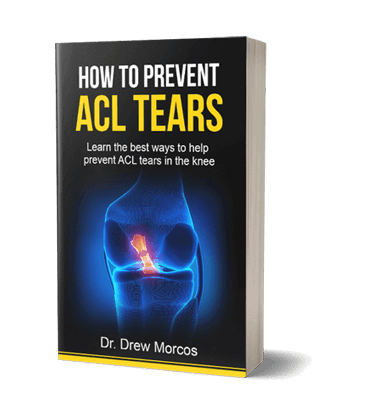The Mystery of a Foot Stress Fracture
From an outsider’s point of view, it looks like running is a low-risk sport. There’s no contact, no jumping, and no fancy footwork necessary. But runners know that this is just a facade, and that running creates plenty of risks for the runner. The good news is that there are a number of ways to tweak training, conditioning, technique, and so forth that can help runners stay well. The bad news is that even the most prudent of runners can often find themselves at the mercy of common injuries, like a stress fracture in the foot.
Stress fractures tend to occur gradually and are caused by repetitive stress to a specific bone. As such, they are one of the most common over-training injuries. A stress fracture is a small crack in the bone, sometimes accompanied by severe bruising. These fractures are less severe than complete fractures where the bone breaks all the way through. Still, stress fractures can be just as detrimental and will require several weeks of rest for healing.
Stress fractures can occur on any bone in the body, but for runners this injury usually happens to the weight-bearing bones in the feet and ankles. Most commonly, the stress fracture will occur in one of the metatarsals, the long bones at the top of the feet which connect the toes (phalanges) to the tarsal bones at the back of the foot. A stress fracture in the foot might also happen to the calcaneus (the heel), the talus (a bone in the ankle), or the navicular (at the top of the midfoot).
Stress fractures often sneak up on runners, and runners are often far too stubborn about running through the pain. But even though this injury isn’t a complete fracture, it’s still a serious issue and should be treated as such.
What Causes a Stress Fracture in the Foot?
Running everyday seems like a good thing—and it can be. But the repeated force on the weight-bearing bones takes its toll on them. Just as we need rest so do our bones and muscles.
Every time a person works out, their bones go through their own routine that ends with something called remodeling. Remodeling refers to the period after a workout, where new bone begins to grow and replaces the older bone. Bones require time and rest to perform this remodeling successfully, so when a runner over trains they’re robbing their bones of the chance to remodel. In turn, the repetitive force on the weight-bearing bones creates the gradual and tiny damage to the bones in the feet. They have no time to heal and thus become fractured.
Stress Reactions vs Stress Fractures
Before an over-worked bone develops a stress fracture, it will first suffer from a stress reaction. This precursor can be detected by the appearance of swelling and inflammation at the location of the stress reaction. This injury develops at the early stages of the gradual wear that leads to a stress fracture. In a stress reaction, the bone is beginning to weaken and to wear down, but has not yet cracked. If a stress reaction is caught early on, a runner can potentially avoid a stress fracture by giving the injured foot a break and allowing it to heal.
Are You Susceptible to a Stress Fracture in the Foot?
Since stress fractures occur primarily from over training, it’s safe to say that any runner who is changing their routine in any noticeable way is at risk for a stress fracture. That could mean a change in the incline of a route, a change in the surface one is running on, an increase in mileage, and etc. Changes like these can create a subtle but impactful difference in the way the feet handle the weight and stress when running.
Those who have recently suffered from another type of injury are also at higher risk of a stress fracture. This is because runners will often try to correct their technique to avoid discomfort, or change the way they’re distributing the weight in their feet. Anything from a recently sprained ankle to a blister on the heel can cause runners to strain their feet in such a way that may lead to a stress fracture.
It almost goes without saying that those with conditions that affect the strength of the bones are also more susceptible to a stress fracture in the foot. This could mean people with osteoporosis, or even runners who aren’t getting enough vitamins and minerals in their diets.
Signs That You Have a Stress Fracture in the Foot
If you think you may have a stress fracture in the foot, it’s extremely important not to ignore it. What might start as minor pain can quickly worsen and may eventually become a complete fracture. Don’t ignore the symptoms of a stress fracture.
The biggest indicator of a stress fracture is localized pain. If you can pinpoint an exact location along the bones where the pain is coming from, this is probably the location of a stress fracture. You can check gently for stress fractures by pushing softly on each metatarsal and on other bones where the pain seems centralized. Stress fractures are also sometimes accompanied by bruising and swelling on the surface where the fracture has occurred.
Those who have the option to visit a medical professional might wish to do so to get an expert opinion on a potential stress fracture. However, if you’re quite certain that you’ve suffered from a stress fracture, it pays to be adamant about the type of medical test that they use to diagnose it. A standard X-ray will not detect a stress fracture. As a result, a stress fracture can easily be misdiagnosed and mistreated. The best way to test for a stress fracture is with an MRI or CT Scan. Ask your doctor to use one of these methods on you so you can be sure you get your injury diagnosed accurately.
How to Treat a Stress Fracture in the Foot
In most cases, a stress fracture can heal without surgery or any major medical attention as long as it gets proper care and rest. The most important thing to do when you’ve discovered you have a stress fracture is to stop running. Remember that remodeling that your bones do to heal after pressure? With a stress fracture, your bones will need extra time to recover and heal. Take it easy for 4-6 weeks. Ice your foot to help alleviate pain, but do not take anti-inflammatories such as Advil. Anti-inflammatories actually hinder the growth of bones and will make it all the more difficult for you to bounce back from the stress fracture.
You’re the only one who can really know your body and what it needs, so listen to it carefully and don’t push it again until your feet feel ready for the pressure.
For professional 1 On 1 Physical Therapy Orange County, contact us today!






















